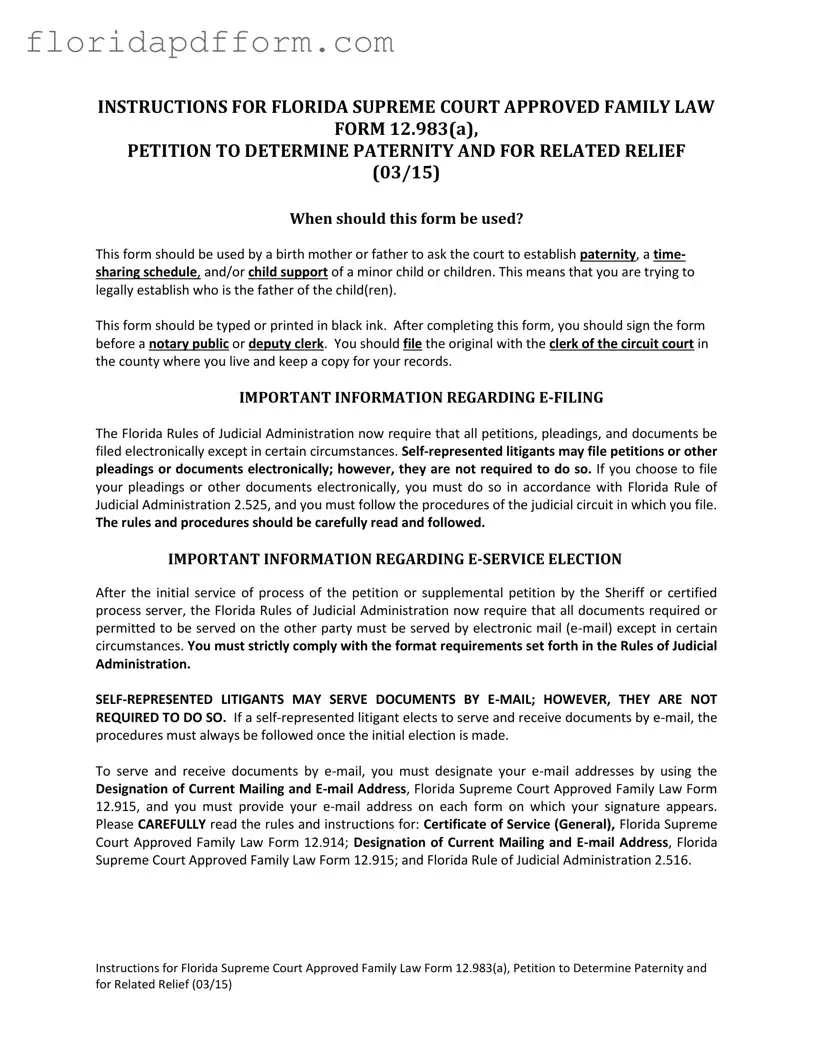Free Florida Petitioner Form
The Florida Petitioner form is a legal document used by individuals seeking to establish paternity and related issues, such as time-sharing and child support for minor children. This form is specifically designed for use by a birth mother or father who wishes to have the court determine the legal father of their child or children. Proper completion and filing of this form are essential steps in the paternity determination process.
Launch Editor
